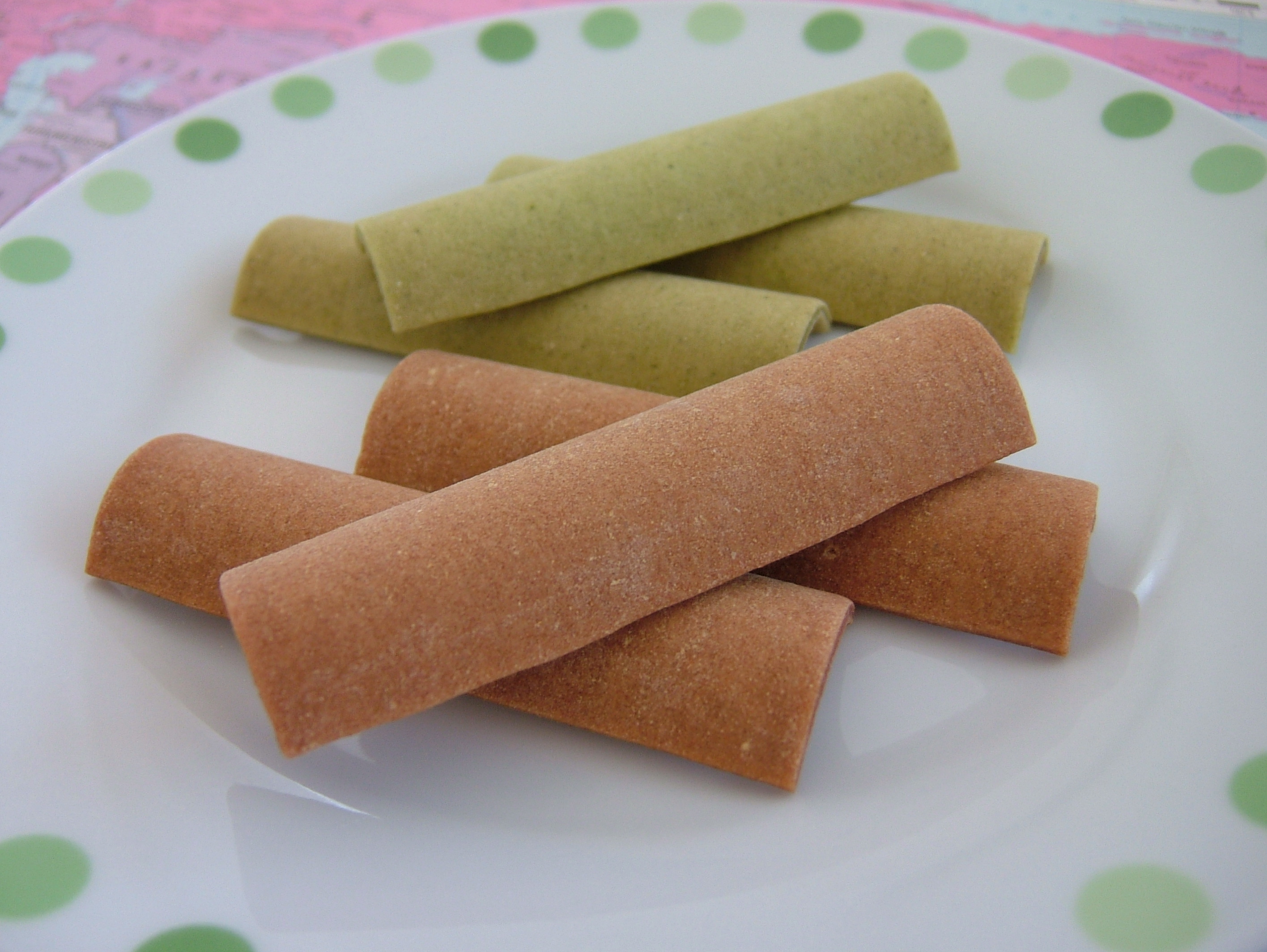The box itself is pretty cool. Lotteria is using a bunch of local varieties of beef for sandwiches this year; the promotion began in November. There are a few months where there will be no special offer, as far as I can understand.
Opening the box, there's a package-in-a-package kind of deal going on. As my coworker said, "Welcome to Japan." In all, the burger was protected by four layers: a plastic bag, a paper bag holding the box and my fries, and the wrapper you see above. So I finally unwrapped it and got to the sandwich:
There's the burger! It looks like a small piece of meat, but it was hard to get a good shot (it's sliding off the bun a bit). This isn't a big sandwich, but it was larger than I expected.
As you can see, the bun itself isn't the usual brown; it's made from rice flour which is softer and a little chewier, and topped with sesame seeds. They also included too much of the usual boring lettuce, and a special sauce made from apples, bouillon, and local onions. While the review I read mentioned that the bun absorbed their sauce, my burger had plenty of it left behind, making the sandwich messy and a good bit slippery. The meat itself has chopped onions and a larger grain of ground beef, adding a lot of texture.
How does it taste? Pretty good! Most of the lettuce ended up falling onto the wrapper, so I was able to enjoy the flavor of the meat and sauce. The burger was moist and tender, and the larger pieces of beef made this sandwich stand out above any usual patty. I've certainly never had a burger with a flavor like this, and for my first taste of Kobe beef, I have to say it was pretty good.
However, this quality comes at a price, to the tune of 1500 yen for a (fast food) burger with a medium drink. There are burger joints in town with higher-priced sandwiches, but those are real, big burgers. As a novelty and to try Kobe beef, this was worth the cost. You won't see me shelling out that kind of coin again, though.
And, if nothing else, eating this during my lunch at work made for an interesting event. Everybody gathered around me to see the sandwich and watch my reaction! When was the last time you heard of a fast food burger attracting a crowd?










